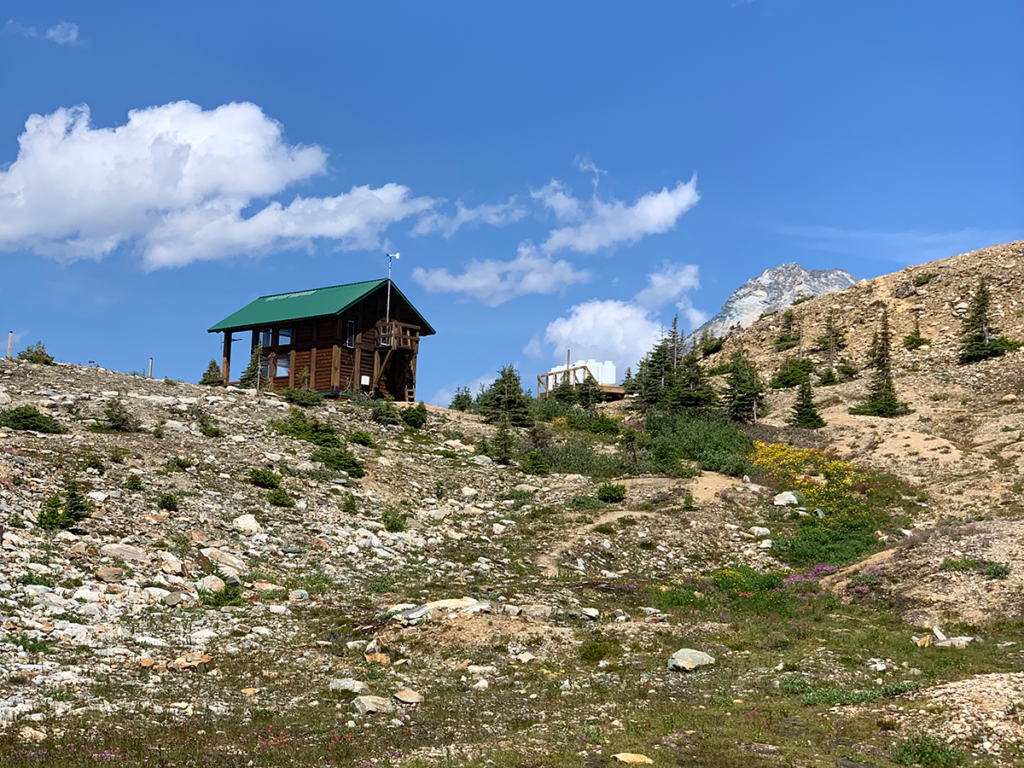
Asulkan Valley trail is nestled within the breathtaking expanse of Canada’s Glacier National Park. And when I say breathtaking, I’m not just referring to how gorgeous this hike is! This hike starts as a nice easy stroll but by the end, you’ll be huffing and puffing. Don’t worry though, it’s so worth it!
If you’re looking for an even steeper (but shorter) hike, check out my hiking guide for Hermit Trail in Glacier National Park.
Apart from the lush valley scenes, the mountain vistas, and the waterfalls views, another awesome perk to this trail is that it’s it’s dog-friendly! There’s nothing worse than planning an epic adventure and having to leave your furry best friend at home.
So, pack your bags (don’t forget the doggy poop bags!), lace up your boots, and let’s explore the enchanting wilderness along the Asulkan Valley Trail!
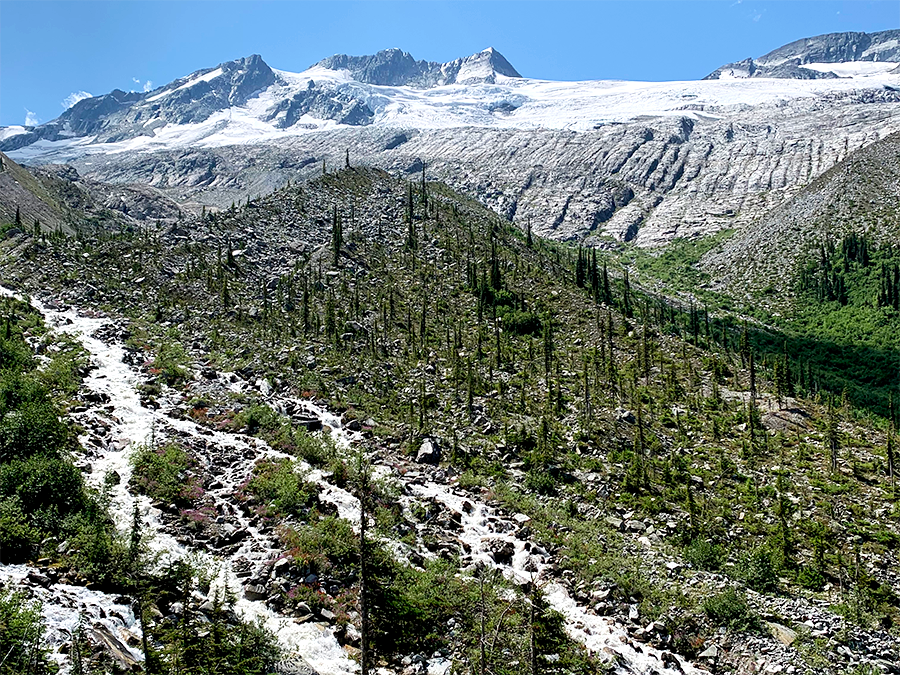
- What To Know About Hiking Asulkan Valley Trail
- Being Safe and Responsible when Backcountry Hiking:
- The Asulkan Valley Trail Experience:
- Getting to the Asulkan Valley Trailhead
- Hiking Through the Valley
- Hanging Out at the Summit
- There's So Much to See on This Trail!
- Make it more than a Day Hike!:
- Preparing to Hike the Asulkan Valley Trail
- What You Need To Know About Hiking The Asulkan Valley Trail: Continued!
- Get to Know Glacier National Park in BC:
- The Best Time to Hike in Glacier National Park in BC:
- Explore even more of Glacier National Park:
What To Know About Hiking Asulkan Valley Trail
Quick Stats
- National Park Day Pass required
- Moderate to difficult depending on your mountain hiking experience
- 13.5km (8.4 miles) round trip
- There-and-back trail
- 966m (3169 ft) elevation gain
- 5-8hrs to complete
- Rugged, uneven trail with bridge crossings
- Last 1km is the steepest
- Front country camping available at trailhead
- Dog-friendly 🐶
- Parking permits required
Location & Parking
Asulkan Valley Trailhead is located near the Illecillewaet Campground in Glacier National Park.
If you’re day-hiking, be sure to arrive early so you can find a parking spot in the day use area.
If you’re camping, drive through the campgrounds, claim a spot you like and then visit the Welcome Station to purchase your permits.
Trail Map & Elevation Profile
Packing Essentials
- Hiking poles
- Comfortable hiking boots or shoes
- Lots of water
- Lunch and snacks
Packing List for Your Dog
- Leash
- Doggy water dish
- Doggy poop bags!
- Treats or some extra kibble
- Heavy-duty Ziplock bag to pack out full doggy poop bags
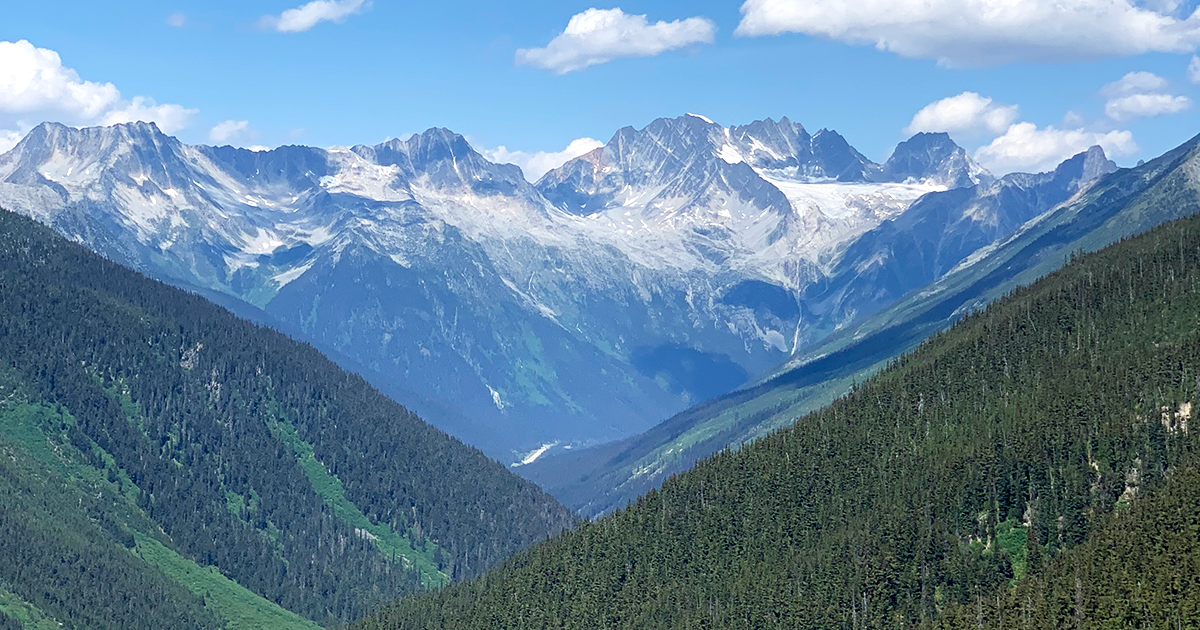
Being Safe and Responsible when Backcountry Hiking:
Bear Safety
Seeing bears is both exhilarating and slightly terrifying depending on where you see them. From your car: exhilarating, amazing, 10/10! But from the trail, it can be a little scary.
While bear encounters are relatively rare, it’s crucial to prepare yourself by learning to identify grizzly vs. black bears, minimize your chances of encounters, and react safely if do have an encounter and always carry (and know how to use) bear deterrents.
Check out my post 5 Essential Bear Safety Tips You Need to Know to learn more!
Leave No Trace
Just like that old saying goes, “Take nothing but pictures and leave nothing but footprints!”. Practice responsible hiking by carrying out all of your trash (including stranger’s garbage and/or your dog’s waste!), staying on designated trails, and respecting wildlife and plants!
As wandering nature nerds, we want to leave the land better than we found it.
Want to know more about what it means to leave no trace? Check out my post 7 Ways to Leave No Trace When Exploring the Great Outdoors.
The Asulkan Valley Trail Experience:
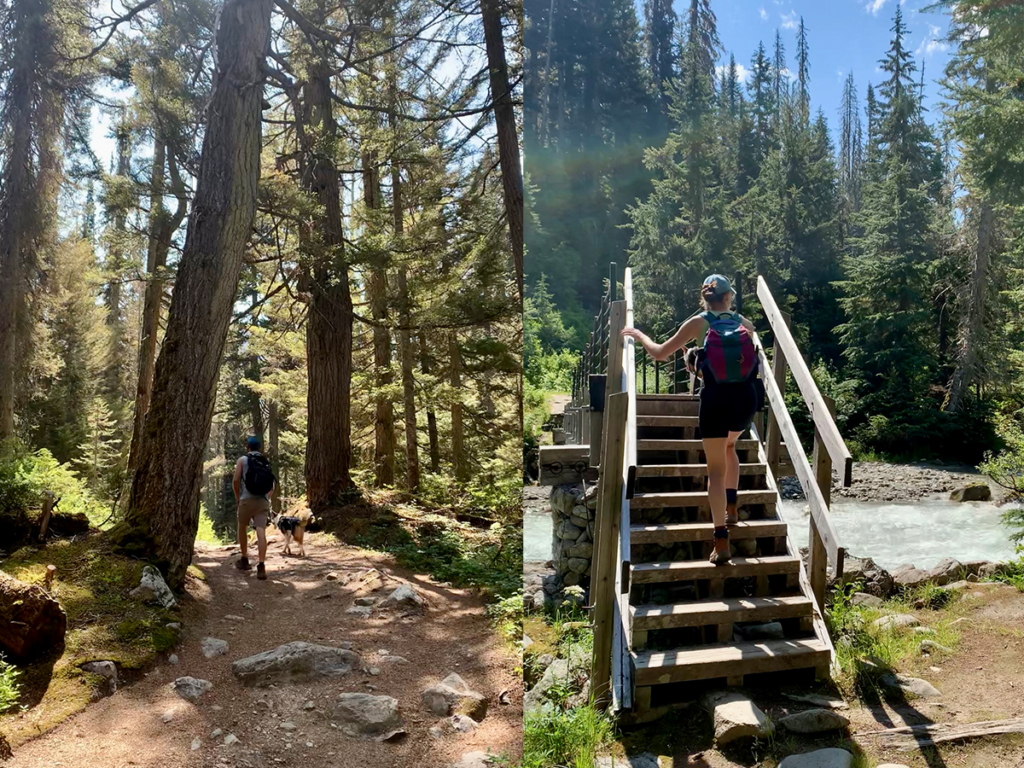
Getting to the Asulkan Valley Trailhead
We’re located in Kelowna, so we woke up (kinda) early to tackle the 3-hour drive ahead of us. The drive is a bit long but you get to drive through Glacier National Park, which is an experience in itself. There’s seemingly endless picturesque landscapes as you drive through majestic mountain passes, lush forests, and past pristine lakes!
I’m a notoriously bad morning person and I always think I’ll be able to get up and at ’em way more quickly than I actually can. So although we woke up (kinda) early, we still arrived at the trailhead around 11:30am. Not too bad honestly!
But if you’re good at mornings – first of all, I commend you – and second of all, I would advise you to take full advantage of that useful talent and get to the trailhead/campground as early as possible!
The Illecillewaet Campground is a first-come-first-serve campsite and because we’re forced to be weekend warriors thanks to our jobs – *insert eye-roll here* – we had no idea if we could score a campsite or not. We’d either get a campsite or have to drive back after the day-hike.
We scored a campsite though! Yay! The campsite has lots of space to park your car and put up your tent.
If you’re day-hiking the Asulkan Valley Trail and don’t need a campsite, there are day use parking spots available but it fills up quick! Most people resort to parking along the road into the campground.
Always check the travel time from your location to the trailhead and plan accordingly!
Estimated Travel Times from your Location:
- Vancouver – 7 hours
- Kelowna – 3 hours
- Kamloops – 3 hours
- Revelstoke – 45 minutes
- Golden – 1 hour
- Banff – 2 hours
- Calgary – 4 hours
Hiking Through the Valley

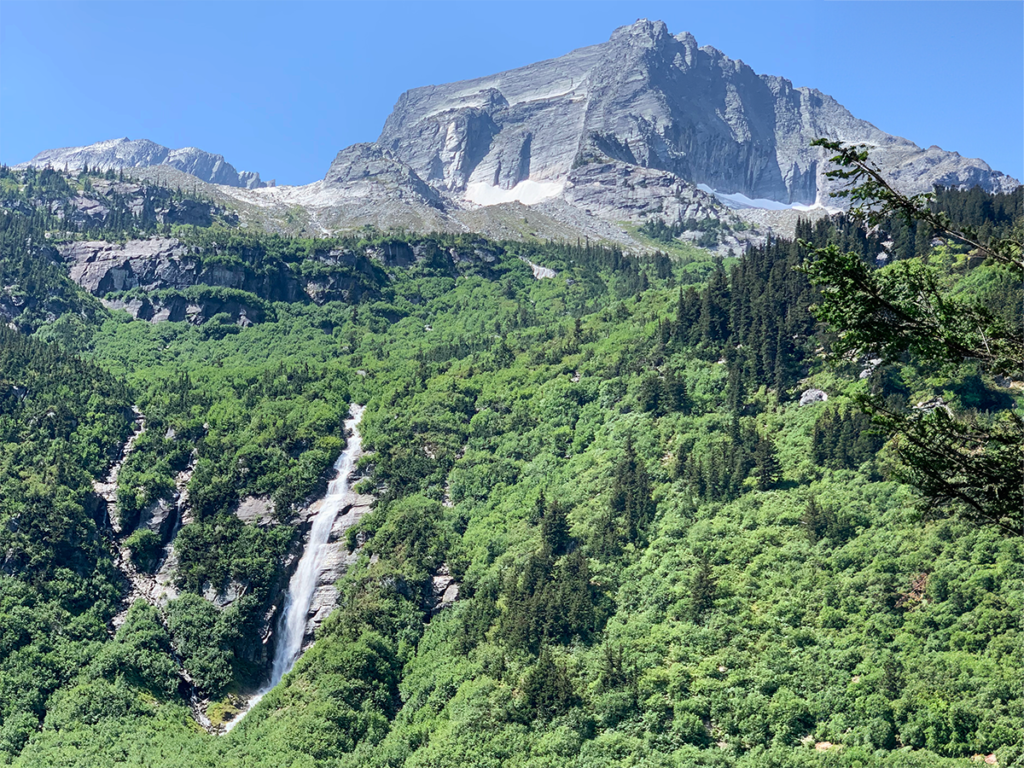
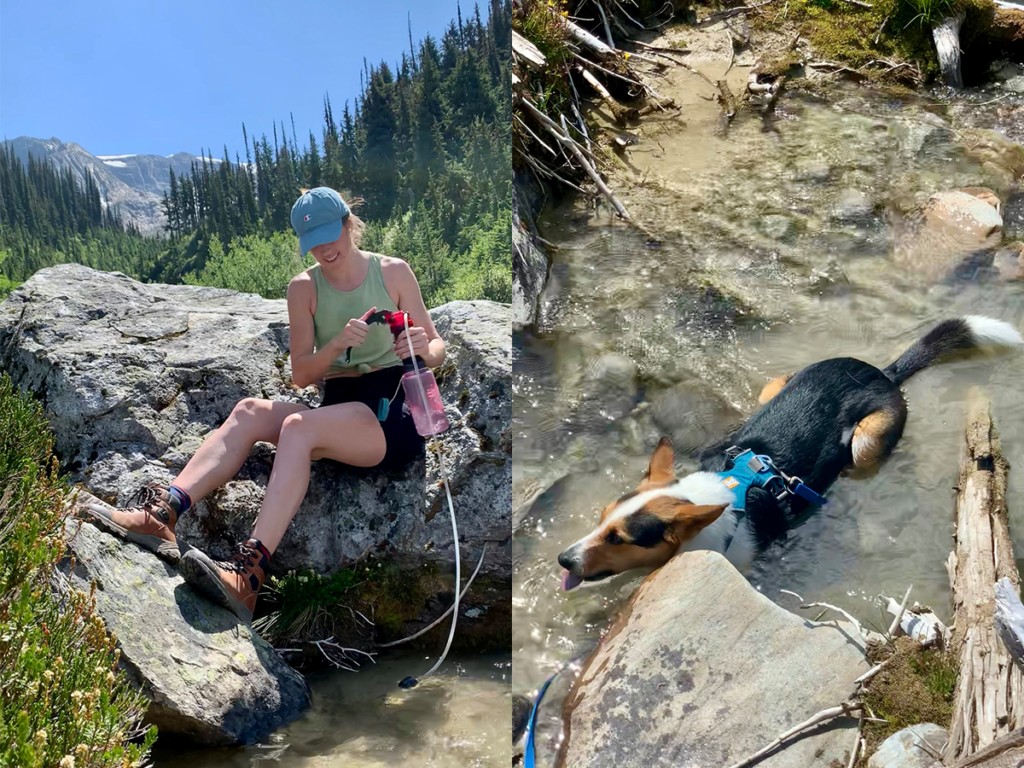
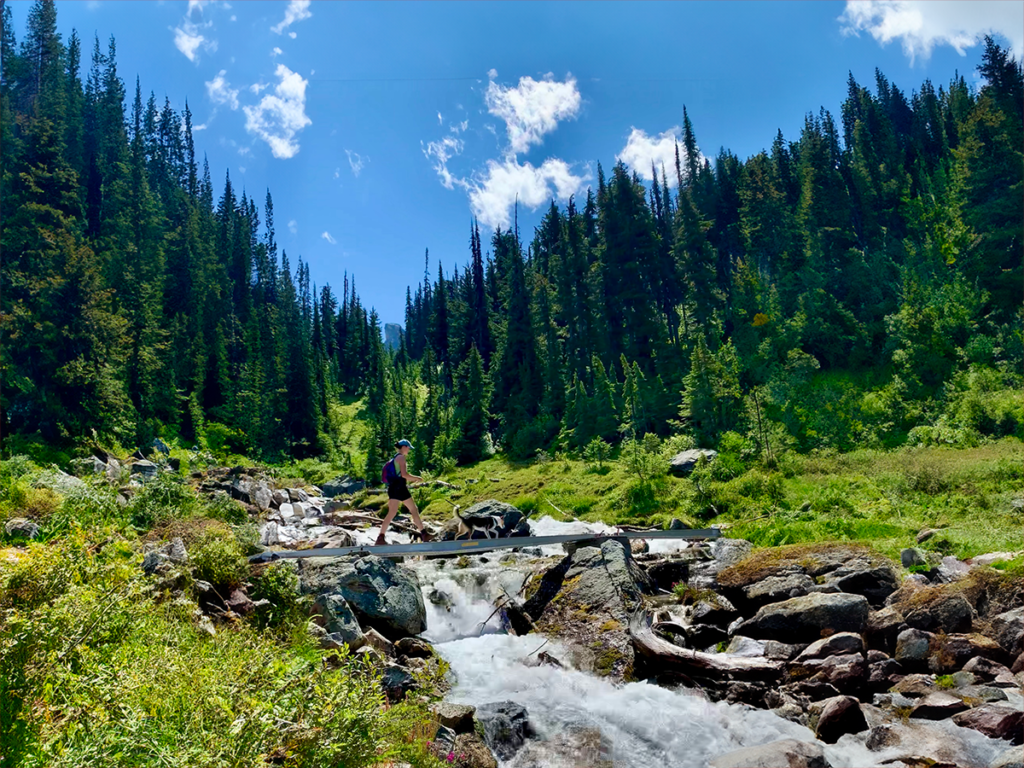
Hanging Out at the Summit
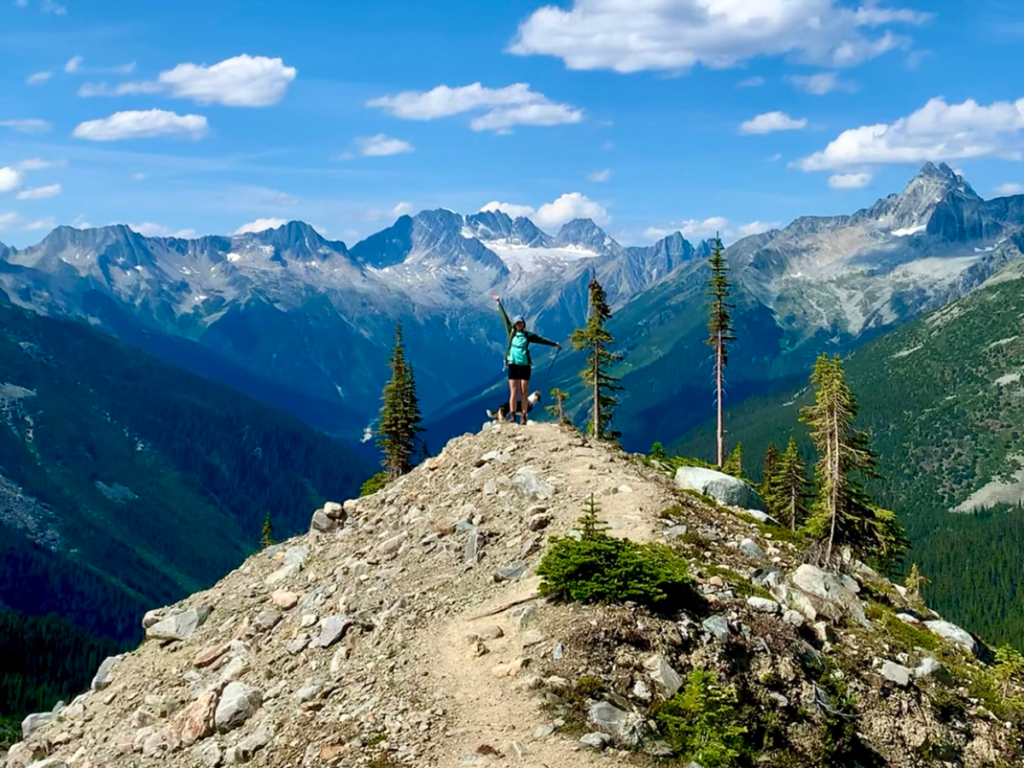
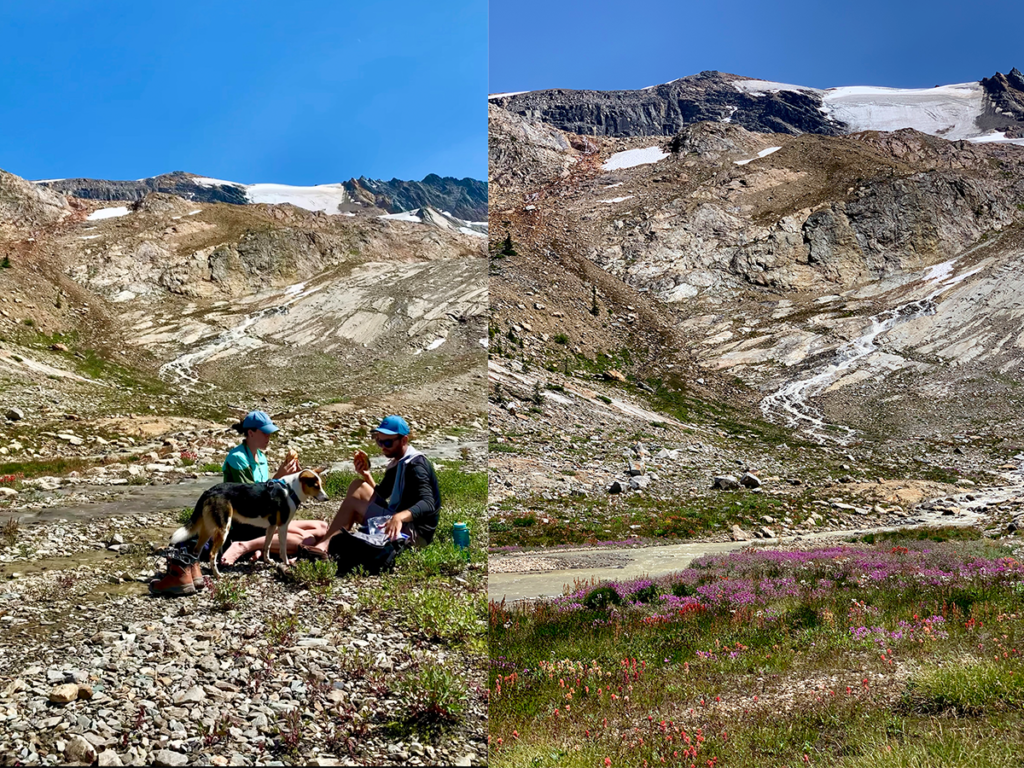
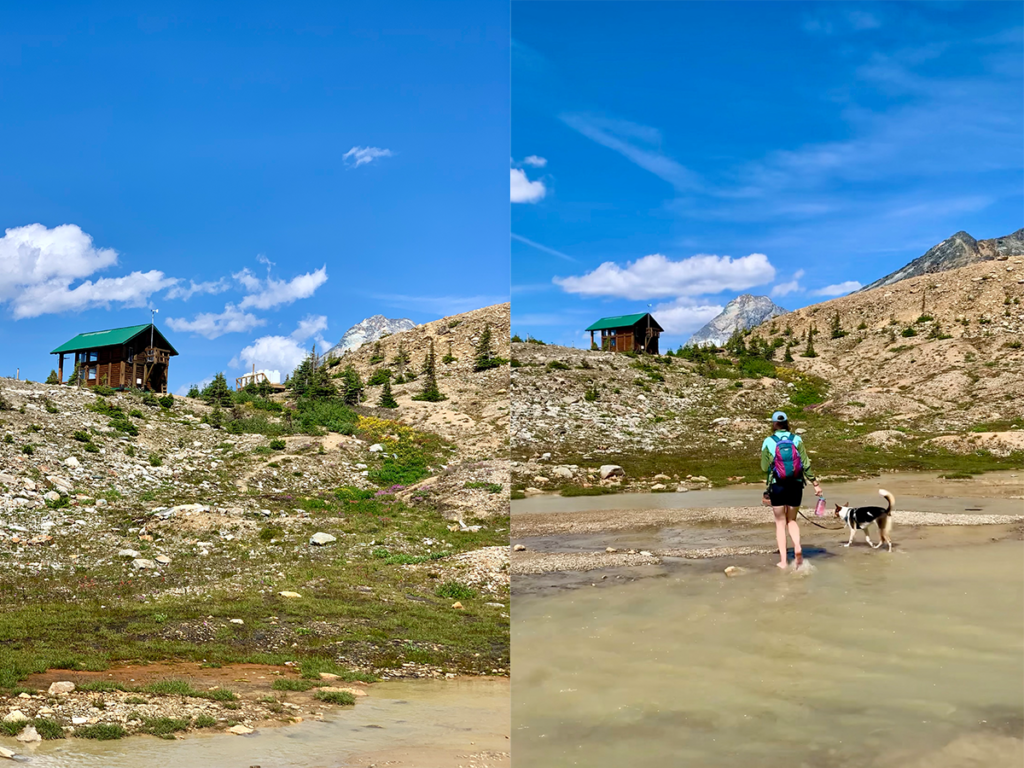
There’s So Much to See on This Trail!
Hiking up the steep Hermit Meadow Trail, you’re going to be captivated by the 360-degree beauty of Glacier National Park.
So here are just a few highlights you can expect:
- Mountain views:
You start the hike at the bottom of the valley with towering mountainscapes on every side of you, then end the trail at a wildflower meadow on top of a mountain where you’ll be almost level with the mountains around you. Absolutely beautiful mountain views the entire time! - Waterfalls & Rivers:
The trail follows the Illecillewaet river almost the entire time. This offers beautiful views but also a cool breeze during your hike! The river water is flowing directly from the Illecillewaet Glacier and is super cold and clear. You’ll also see lots of waterfalls, I believe we counted 4 within the valley! - Wildflowers:
Down in the lush valley where you begin the hike, there are lots of wildflowers. But as you ascend to the end of the trail, you’ll be amazed at the abundance of wildflowers in the alpine meadow! The best time to spot wildflowers in bloom is from early July to mid-August. - Wildlife:
I saw lots of Columbian Ground Squirrels and even a couple of Pikas! Pika’s are my favourite wildlife spots, they’re so adorable! Remember to keep your dog on leash at all times so they don’t chase them.

Make it more than a Day Hike!:
Sometimes driving home right after crushing a big day-hike is just too exhausting.
Unfortunately, there aren’t any backcountry campsites on the Asulkan Valley Trail, so if that’s more your style you should check out hiking the Hermit Trail in Glacier National Park.
But there are frontcountry campsites! Yay!
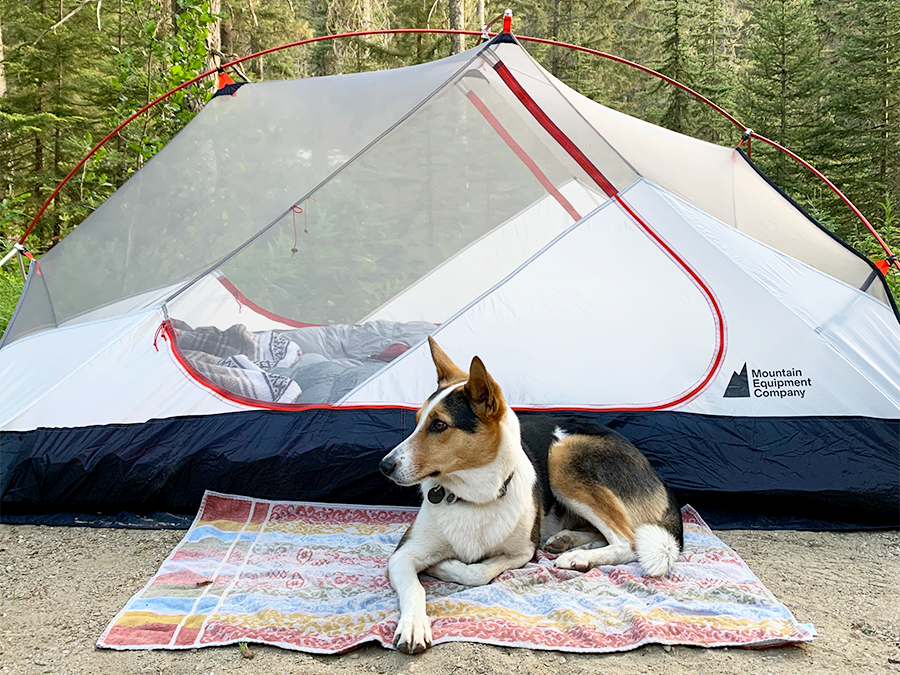
Frontcountry Camping in Glacier National Park:
Frontcountry camping (a.k.a car camping) means you can access this campsite by car! It’s super luxurious and convenient. Sites will have space for your car and trailer, or a designated level tent pad, a picnic table and a fire pit.
There are 3 main frontcountry campsites in Glacier National Park to choose from, however only 2 are currently operating:
Illecillewaet Campground
Illecillewaet Campground is the best campground to choose if you’re looking for an awesome basecamp. The campground is literally at the trailhead for Asulkan Valley Trail and a handful of others! It’s great!
Campsite fees at Illecillewaet Campground: $24.00/site
Everything you need to know about the Illecillewaet Campground in Glacier National Park B.C.:
- Illecillewaet (ill ah SIL-ah-wet) is a Sinixt people’s word that means “Big Water”
- Generally operates from late-June to early October
- It’s a first-come-first-served (fcfs) campsite
- 60 campsites
- Campsites can accommodate cars camping, tents, small RVs and campervans
- Campsites that can accommodate large RVs are limited
- No power hook-ups
- Pit and flush toilets
- Food caches for storing your food and toiletries
- Potable water
- Kitchen shelters to prepare food in
- The campground is dog-friendly, keep them leashed at all times and never leave them unattended
Check out Parks Canada Frontcountry Camping to learn more about registration, fees and the campground.
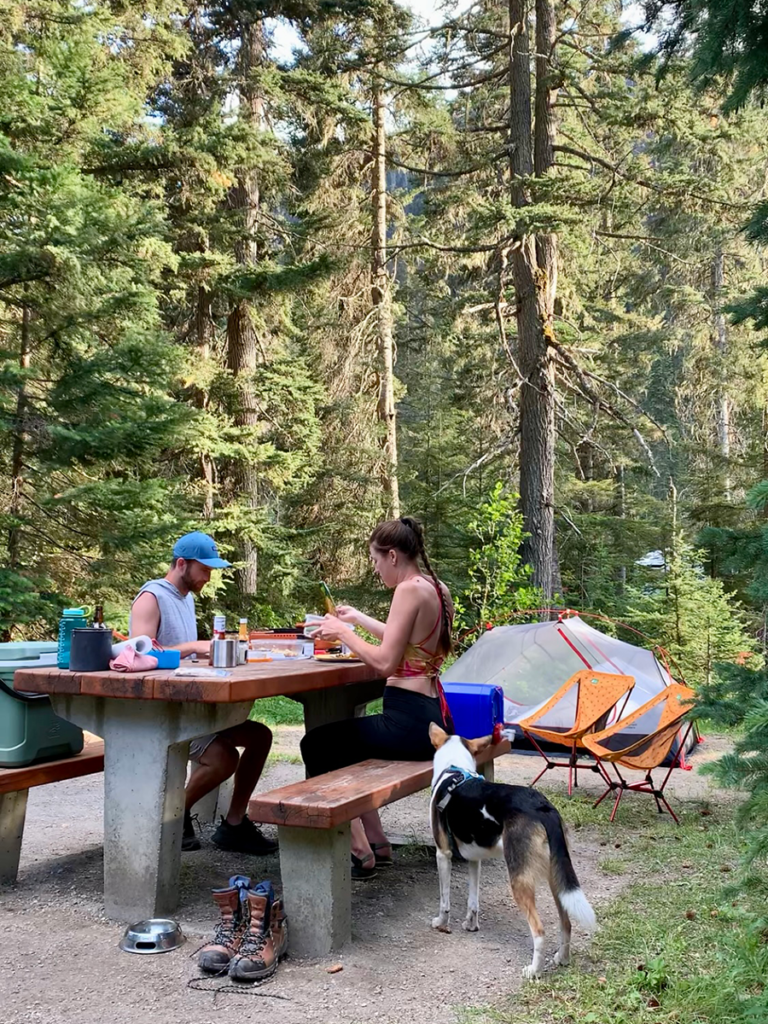
Loop Brook Campground
If you’re looking for a smaller and quieter campground to hang out in, the Loop Brook Campground would be perfect for you! It’s steps away from some great interpretive nature trails and a quick jaunt over to the Asulkan Valley trailhead in Illecillewaet Campground.
Campsite fees at Loop Brook Campground: $24.00/site
Everything you need to know about the Loop Brook Campground in Glacier National Park B.C.:
- Generally operates from late-June to early October
- You have to reserve campsites through Parks Canada Reservations
- 20 campsites
- Campsites can accommodate cars camping, tents, small RVs and campervans
- No power hook-ups
- Pit and flush toilets
- Food caches for storing your food and toiletries
- Potable water
- Kitchen shelters to prepare food in
- The campground is dog-friendly, keep them leashed at all times and never leave them unattended
Check out Parks Canada Frontcountry Camping to learn more about registration, fees and the campground.
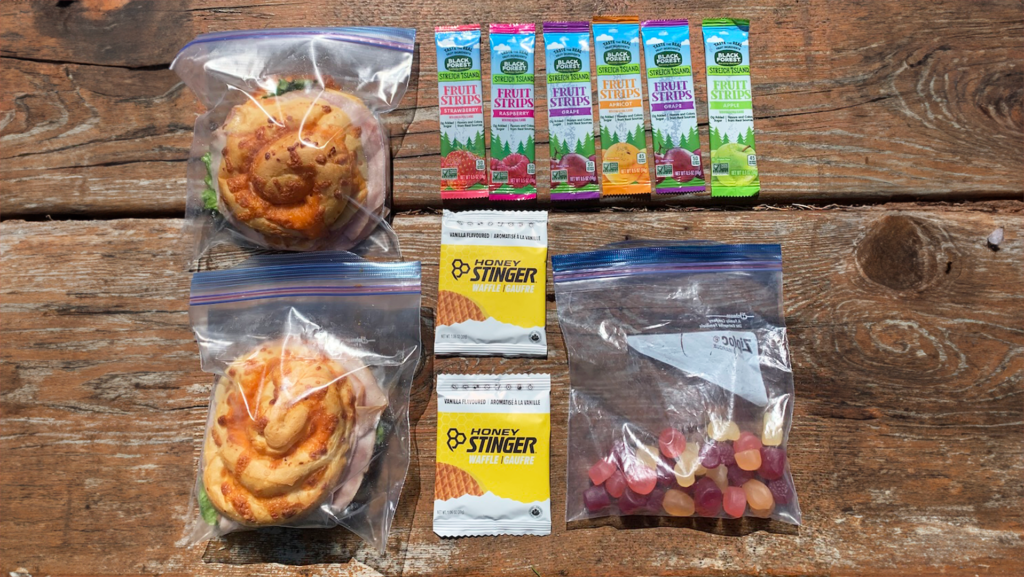
Preparing to Hike the Asulkan Valley Trail
Checking Road Conditions + Weather Reports
The day before (and sometimes just before we leave because I’m a bit neurotic) I always make sure to check the road conditions on DriveBC —it’s like a sneak peek at your adventure’s first leg! Mountain roads can throw some curveballs with surprise snow, landslides, or random construction, so it’s good to stay in the loop and avoid any “ugh, seriously?” moments.
And while you’re at it, give the weather a quick check too. We all know how moody mountain weather can be—sunshine one minute, a downpour the next! Pack those layers, toss in some rain gear, and be ready for anything. That way, you can keep the good vibes rolling, no matter what Mother Nature decides to do!
What to Pack for Hiking Asulkan Valley Trail:
Asulkan Valley Trail is a moderately long day hike at about 13km total.
You’ll work up a sweat hiking up no matter the season, you’ll be thirsty and hungry when you reach the top and after hanging out in the meadow for hours taking in all of the views, you’ll probably end up a little bit chilly on the hike back down. Especially when you get back down into the cover of forest by the late afternoon.
When packing, the main thing to remember is that weather can change in an instant when you’re adventuring in the mountains. You’ve probably heard the saying “if you don’t like the weather, just wait 10 minutes”. This is the code to live by when you’re packing for mountain adventures!
Alright, let’s get into your packing list for a day hike on the Asulkan Valley Trail:
- Bear spray in its canister holder
- Hiking poles (your knees will thank you on the hike back down, trust me!)
- A favourite pair of comfortable hiking boots, hiking shoes or trail runners
- Rain jacket (just in case!)
- Day-hiking backpack
- Lightweight towel (just in case you want to lay down in the glacier runoff to cool down)
- First-aid kit, safety essentials & an emergency kit
- Lots of water and a water filter (if you have it)
- High protein and energy-packed snacks and a lunch
- Trail map (a physical map or download a map from your favourite adventure app)
- Fully charged cell phone and battery bank (don’t forget your charging cord!)
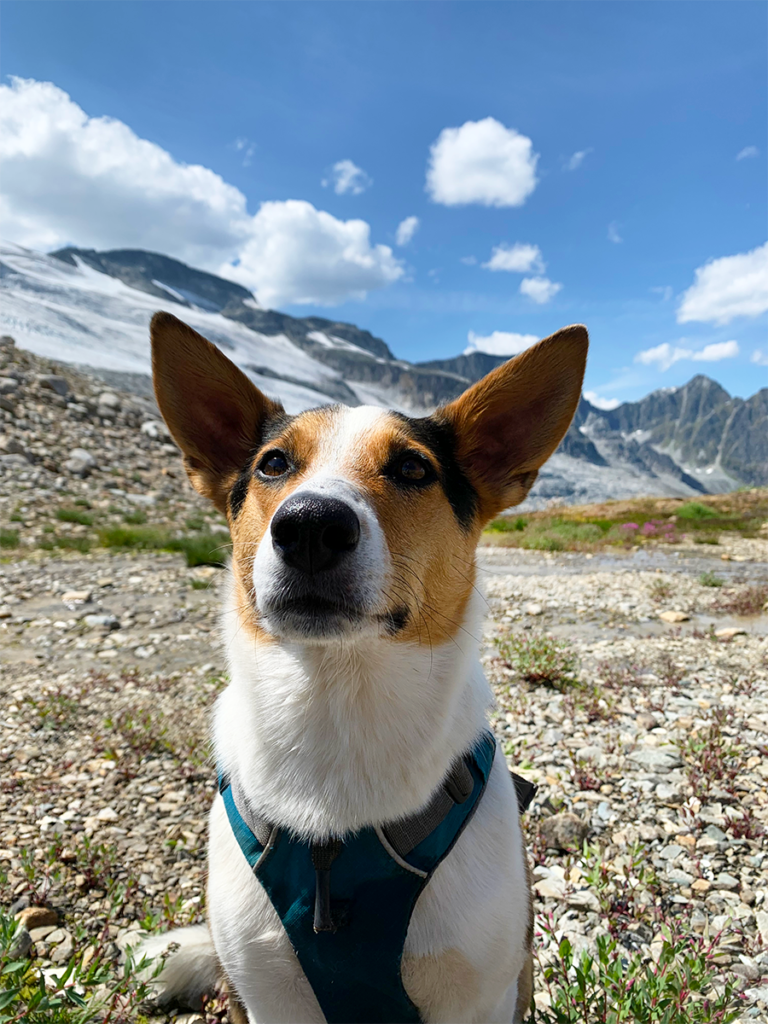
What to Pack for Hiking the Asulkan Valley Trail with your Dog:
If you’re going to be sweaty, thirsty and hungry while hiking, I guarantee that your dog is too! I try (my best) to be the best dog mom ever so this is what I like to pack for my dog on a day-hike:
- Leash
- Halti and collar or a harness
- Collapsible doggy dish for water and snacks
- High protein treats or some extra kibble
- Doggy poop bags
- Heavy-duty Ziplock bag to keep any full doggy poop bags sealed away in
What You Need To Know About Hiking The Asulkan Valley Trail: Continued!
Whose Land Are You On?
Canada’s Glacier National Park falls within the traditional territories of several Indigenous nations, including the Secwepemc (Shuswap), Syilx, (Okanagan), Ĩyãħé Nakón mąkóce (Stoney), Ktunaxa (Kootenay), and Sinixt (Lakes) nations.
Check out Native Land to learn more!
Native Land Digital is a not-for-profit that has created an awesome interactive map highlighting Indigenous territories, treaties and languages all around the world.
Glacier National Park’ is located ‘s location is highlighted with the red location pin below.
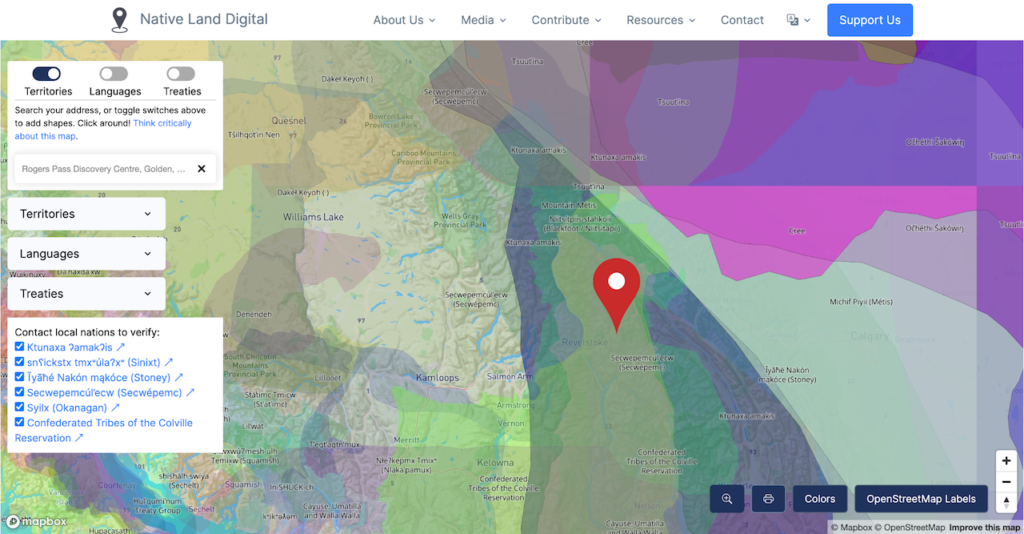
Time Zone
Asulkan Valley trail in Glacier National Park, Canada is in Mountain Standard Time (MST)/Mountain Daylight Time (MSD).
If you’re travelling from Vancouver or the Okanagan you’ll be in Pacific Standard Time (PST) and you’ll cross into a new time zone while driving through Glacier National Park.
If you’re travelling from Banff National Park or Golden, you’ll already be in Mountain Standard Time (MST)/Mountain Daylight Time (MSD).
Keep this in mind when planning your trip!
Required Camping and Hiking Permits
- National Park Day Pass – $10.50/person (adult)
- Illecillewaet Campground Site – $24.00/day
- Campfire Permit – $11.00/day (not mandatory, but nice to know about!)
You can find more information about required permits here.
Required Hiking Permits
- National Park Day Pass – $10.50/person (adult)
Day passes are available at the Rogers Pass Discovery Center for $10.50 per adult. You can find more information about required permits here.
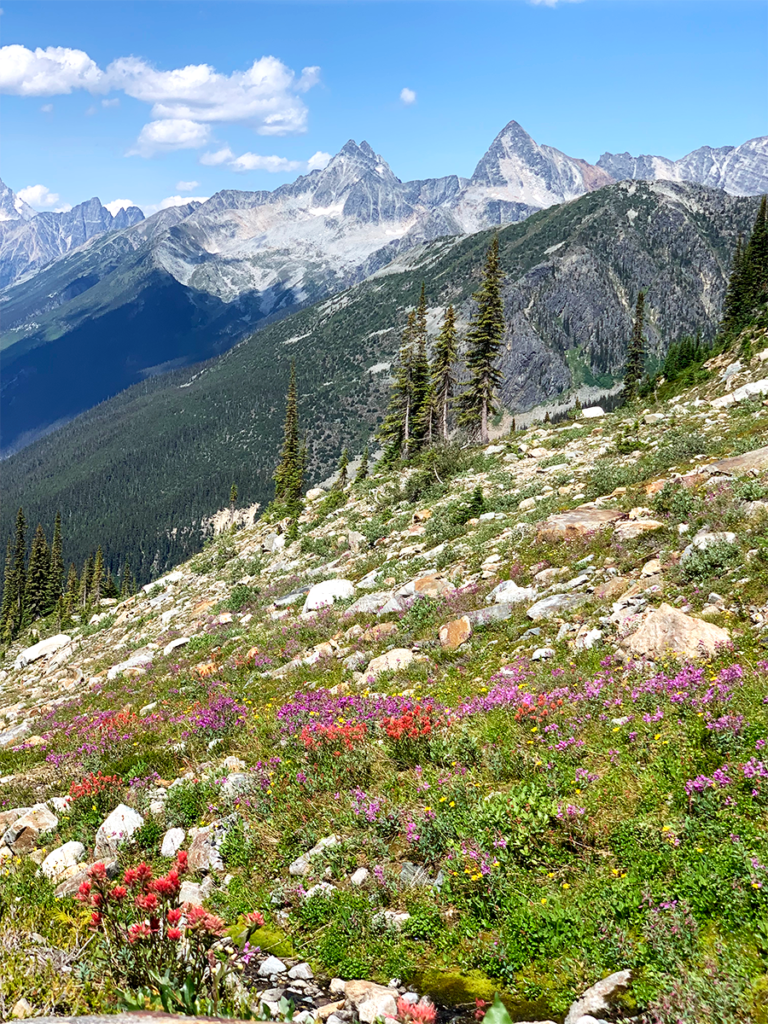
Get to Know Glacier National Park in BC:
I think it’s incredibly important to learn the history of places you travel to. Sometimes on our travels, we can over-plan and rush through our itineraries. We may tend to snap pictures of pretty views and then move on to the next pretty thing. I’m more than guilty of this!
However, I find that when I take the time to learn the history of the place I’m about to explore it really helps me slow down. Then when I’m there, I can fully bask in the awe and wonder of our world.
Check out my post on the history of Canada’s Glacier National Park!
The Best Time to Hike in Glacier National Park in BC:
Generally, the best time for hiking in Glacier National Park is mid-June to mid-September.
- June – generally wet with spring snowmelt and rainfall, by the end of June almost all lower elevation trails are snow-free but expect snowpack to still be present above the tree line.
- July – the valleys are generally in full summer mode and you can expect almost all trails to be snow-free and wildflowers to be popping up everywhere!
- August – Typically the driest month of the year, by mid-August we start to enter the wildfire season so watch out for wildfire reports and air quality reports.
- September – Depending on the type of year you could experience the best hiking conditions ever! But nights start to cool down significantly and there is always a chance of rain and snow.
Explore even more of Glacier National Park:
Glacier National Park has so many amazing hiking trails to explore! Once you’ve completed the beautiful Asulkan Valley Trail you should check out hiking The Hermit Trail and eating your lunch in Hermit Meadows!
